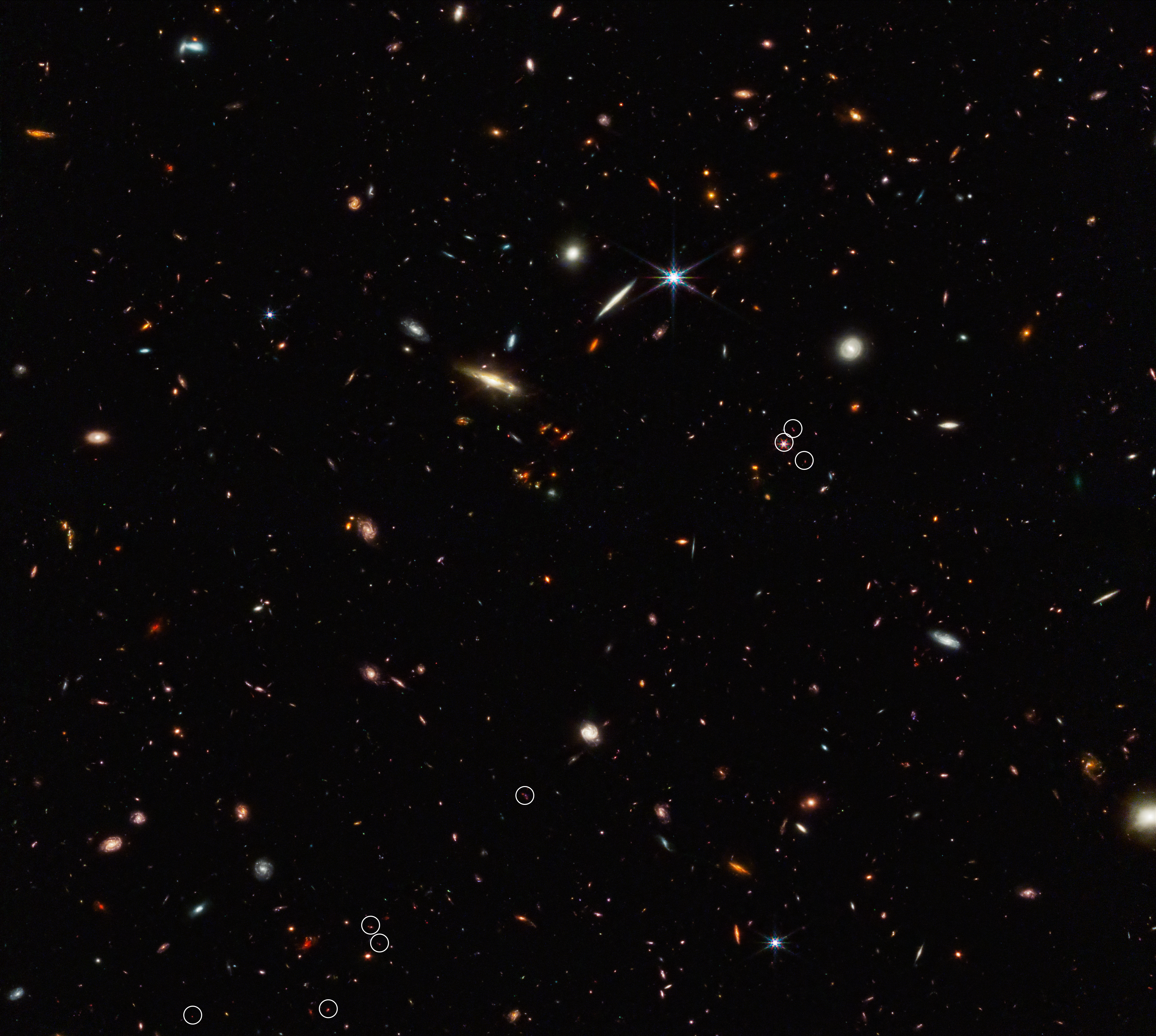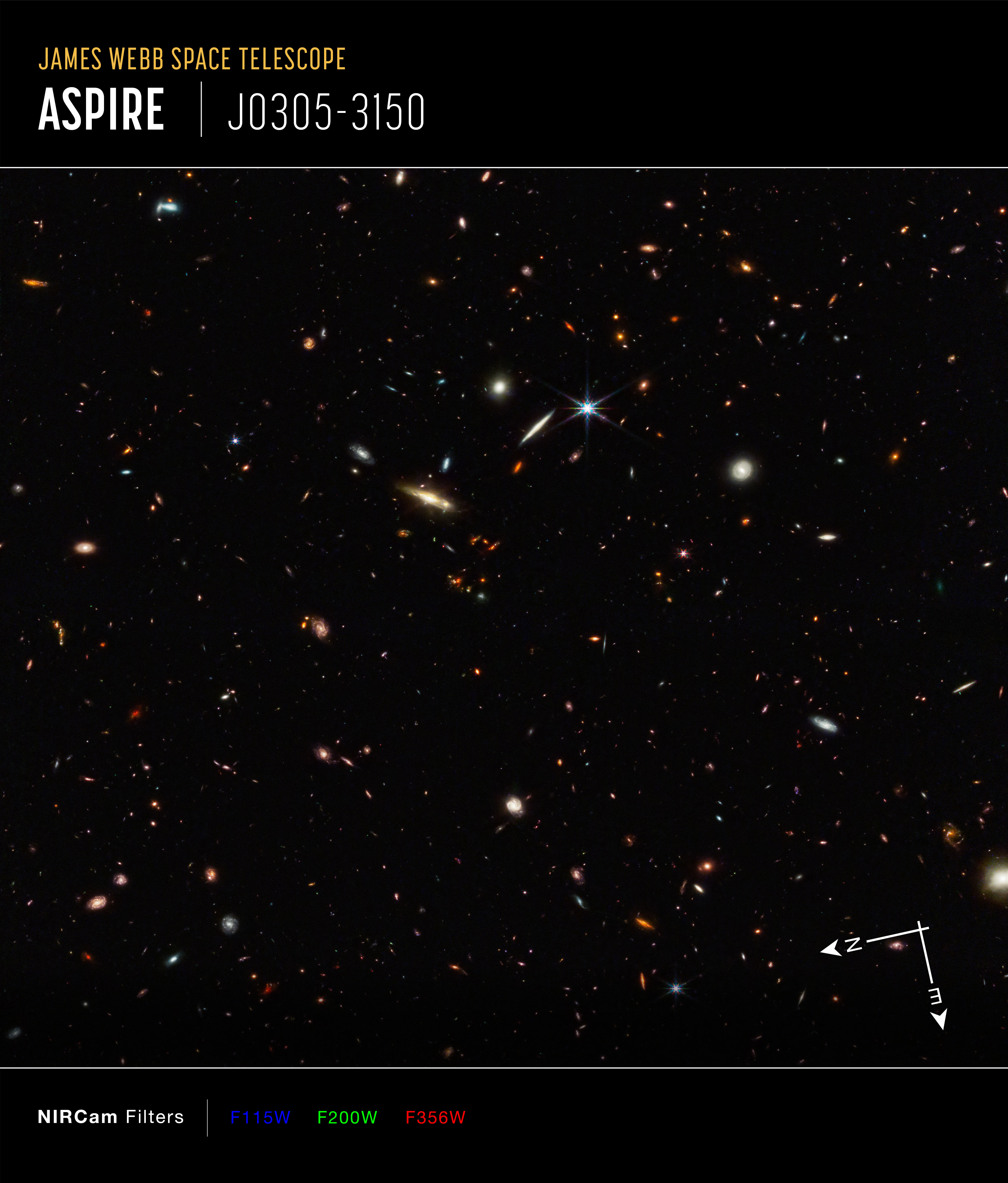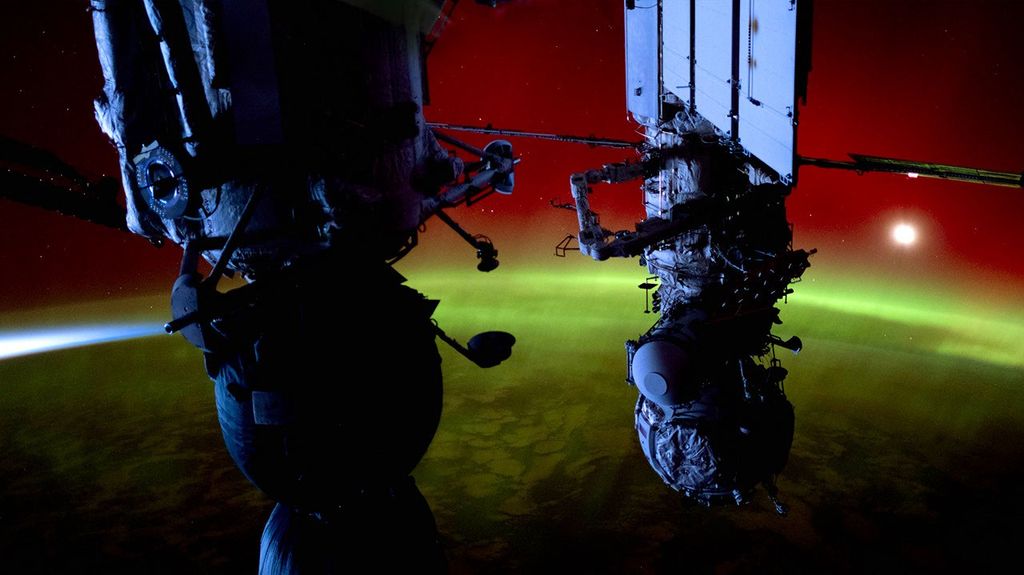1 min read
ASPIRE Cosmic Filament (NIRCam Image)

This deep galaxy field from Webb’s NIRCam (Near-Infrared Camera) shows an arrangement of 10 distant galaxies marked by eight white circles in a diagonal, thread-like line. (Two of the circles contain more than one galaxy.) This 3 million light-year-long filament is anchored by a very distant and luminous quasar – a galaxy with an active, supermassive black hole at its core. The quasar, called J0305-3150, appears in the middle of the cluster of three circles on the right side of the image. Its brightness outshines its host galaxy. The 10 marked galaxies existed just 830 million years after the big bang. The team believes the filament will eventually evolve into a massive cluster of galaxies.
About the Object
- R.A. PositionR.A. PositionRight ascension – analogous to longitude – is one component of an object's position.03:05:17
- Dec. PositionDec. PositionDeclination – analogous to latitude – is one component of an object's position.-31:51:56
- ConstellationConstellationOne of 88 recognized regions of the celestial sphere in which the object appears.Fornax
- DimensionsDimensionsThe physical size of the object or the apparent angle it subtends on the sky.Image is 2.3 arcmin across
About the Data
- Data DescriptionData DescriptionProposal: A description of the observations, their scientific justification, and the links to the data available in the science archive.
Science Team: The astronomers who planned the observations and analyzed the data. "PI" refers to the Principal Investigator.This image was created with Webb data from proposal: 2078 (F. Wang)
- InstrumentInstrumentThe science instrument used to produce the data.NIRCam
- Exposure DatesExposure DatesThe date(s) that the telescope made its observations and the total exposure time.August 2022
- FiltersFiltersThe camera filters that were used in the science observations.F115W, F200W, F356W
- Object NameObject NameA name or catalog number that astronomers use to identify an astronomical object.ASPIRE, J0305-3150
- Object DescriptionObject DescriptionThe type of astronomical object.Galaxies at high redshift
- Release DateJune 29, 2023
- Science ReleaseNASA’s Webb Identifies the Earliest Strands of the Cosmic Web
- CreditImage: NASA, ESA, CSA, Feige Wang (University of Arizona); Image Processing: Joseph DePasquale (STScI)
Downloads

These images are a composite of separate exposures acquired by the James Webb Space Telescope using the NIRCam instrument. Several filters were used to sample wide wavelength ranges. The color results from assigning different hues (colors) to each monochromatic (grayscale) image associated with an individual filter. In this case, the assigned colors are: Blue: F115W Green: F200W Red: F356W

Related Images & Videos

ASPIRE Cosmic Filament (NIRCam Compass Image)
This compass image shows a deep galaxy field imaged by Webb’s NIRCam (Near-Infrared Camera) for the ASPIRE program. The field includes a quasar, called J0305-3150, whose brightness outshines its host galaxy. At the bottom right are compass arrows indicating the orientation of...
Share
Details
Laura Betz
NASA’s Goddard Space Flight Center
Greenbelt, Maryland
laura.e.betz@nasa.gov
NASA, ESA, CSA, Feige Wang (University of Arizona)
Joseph DePasquale (STScI)

























